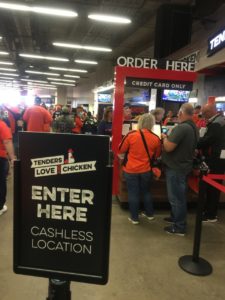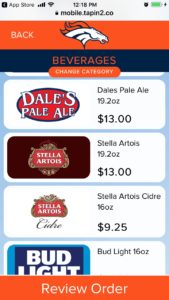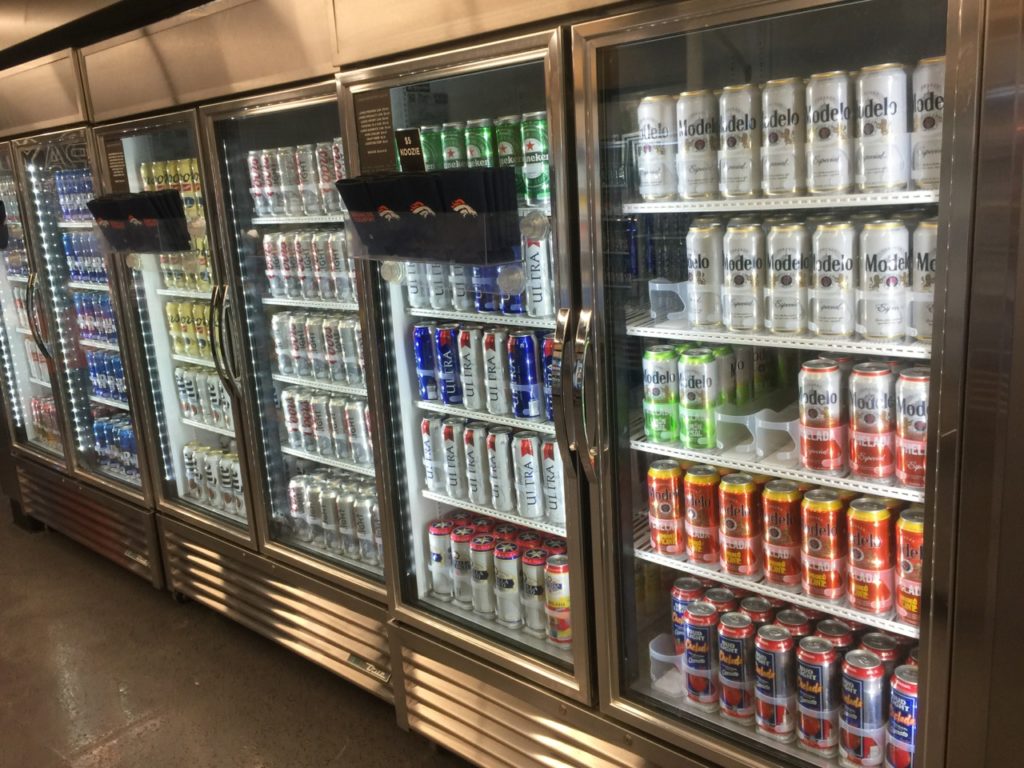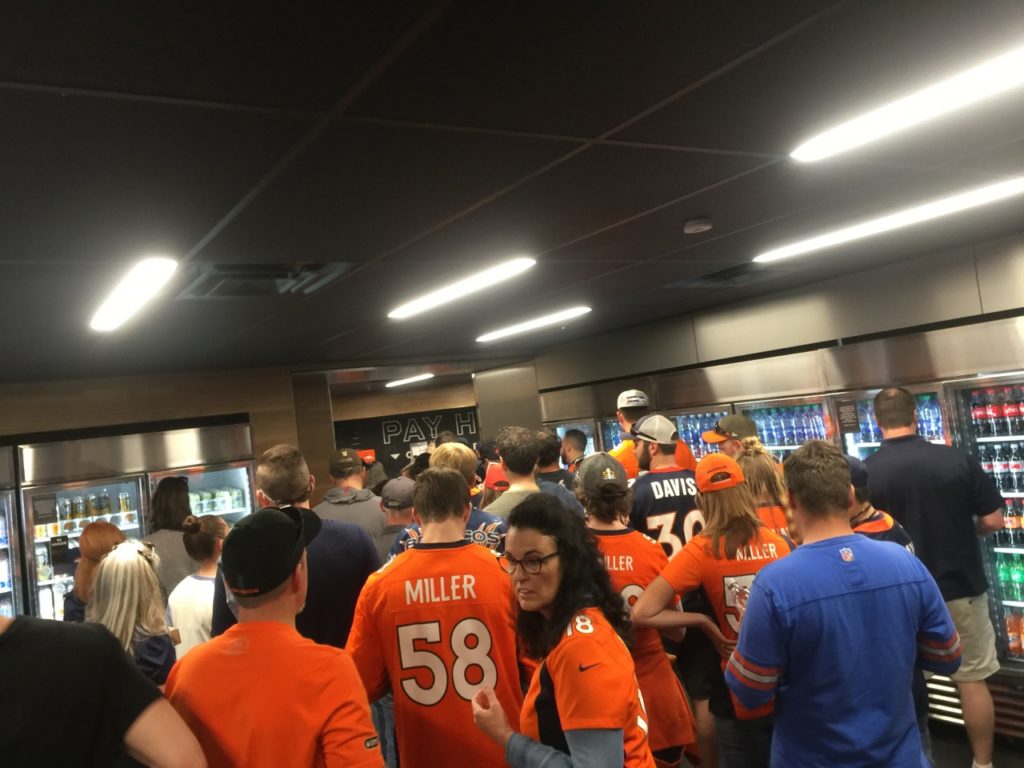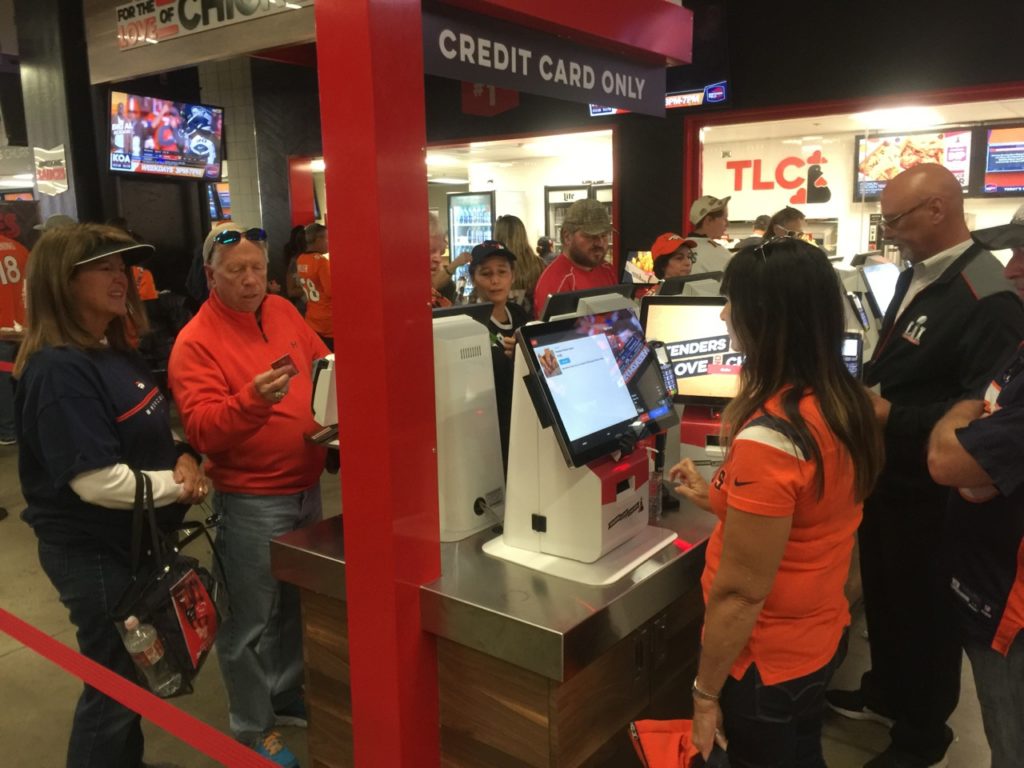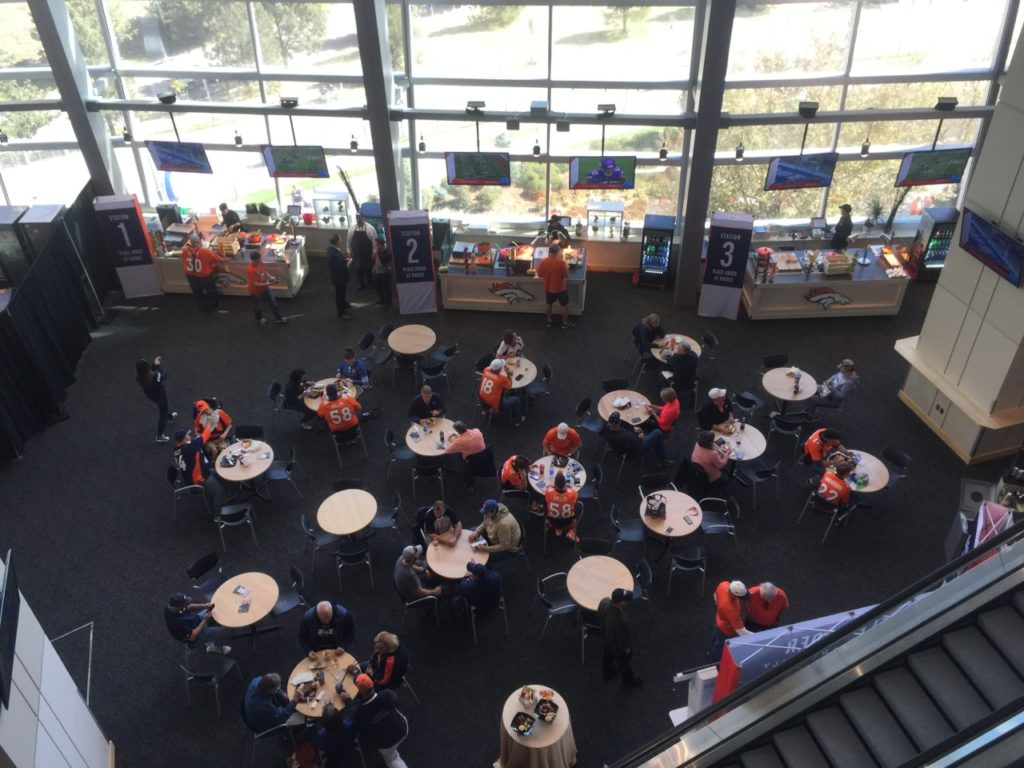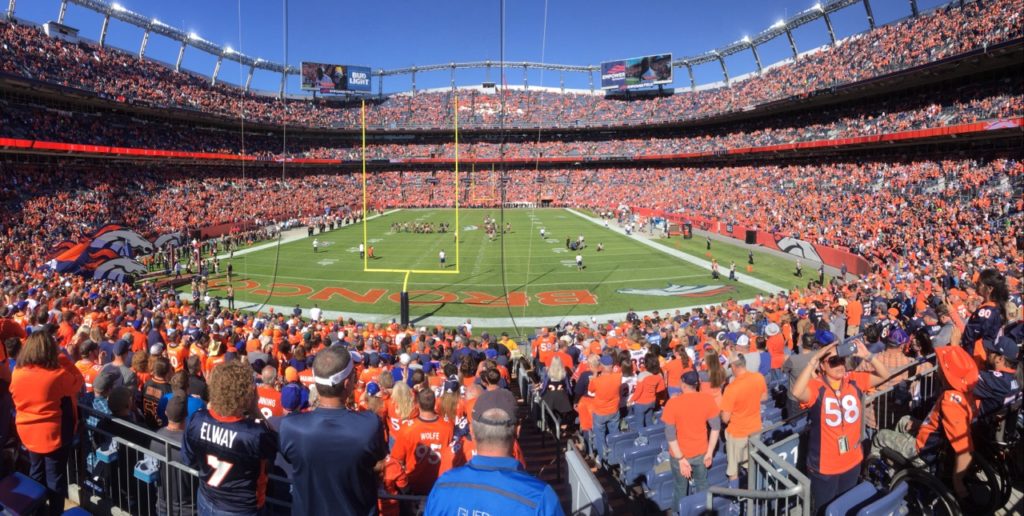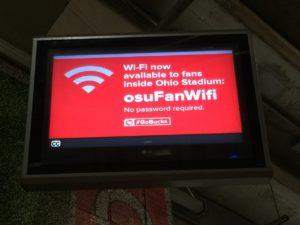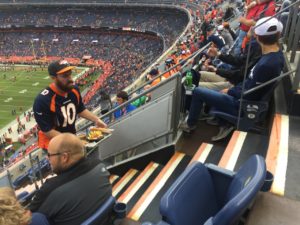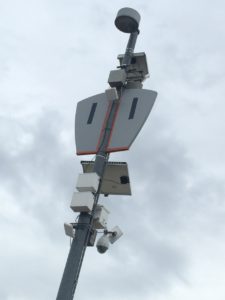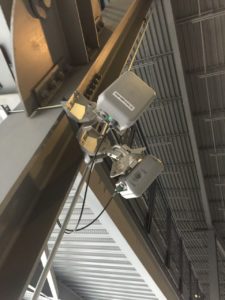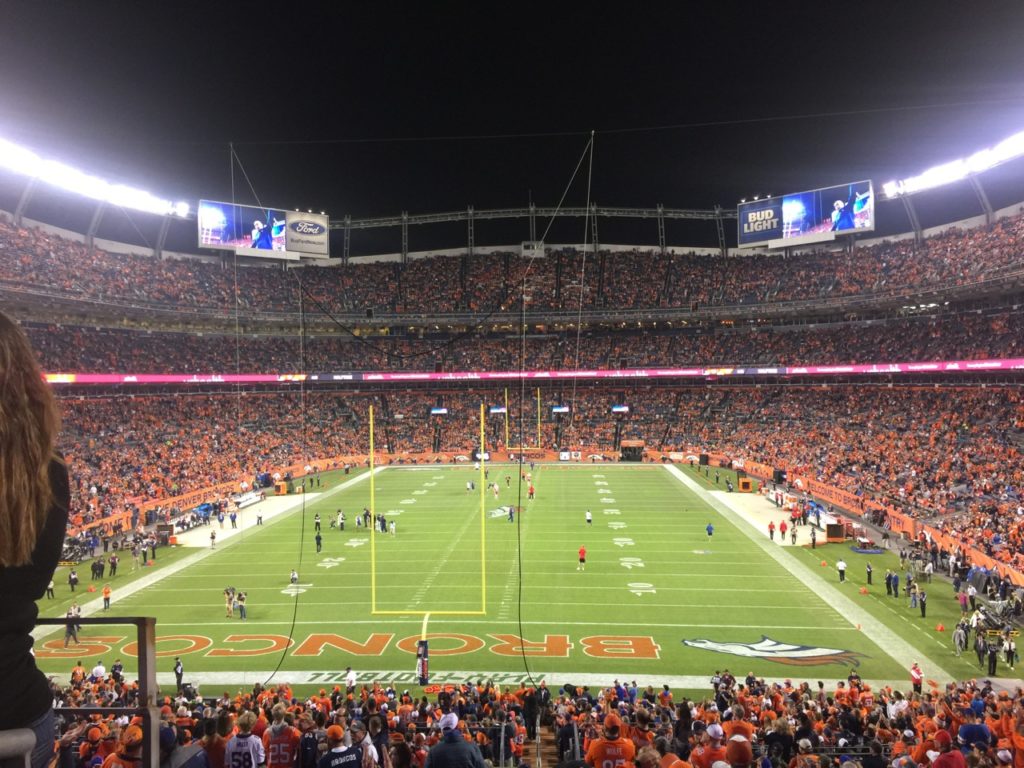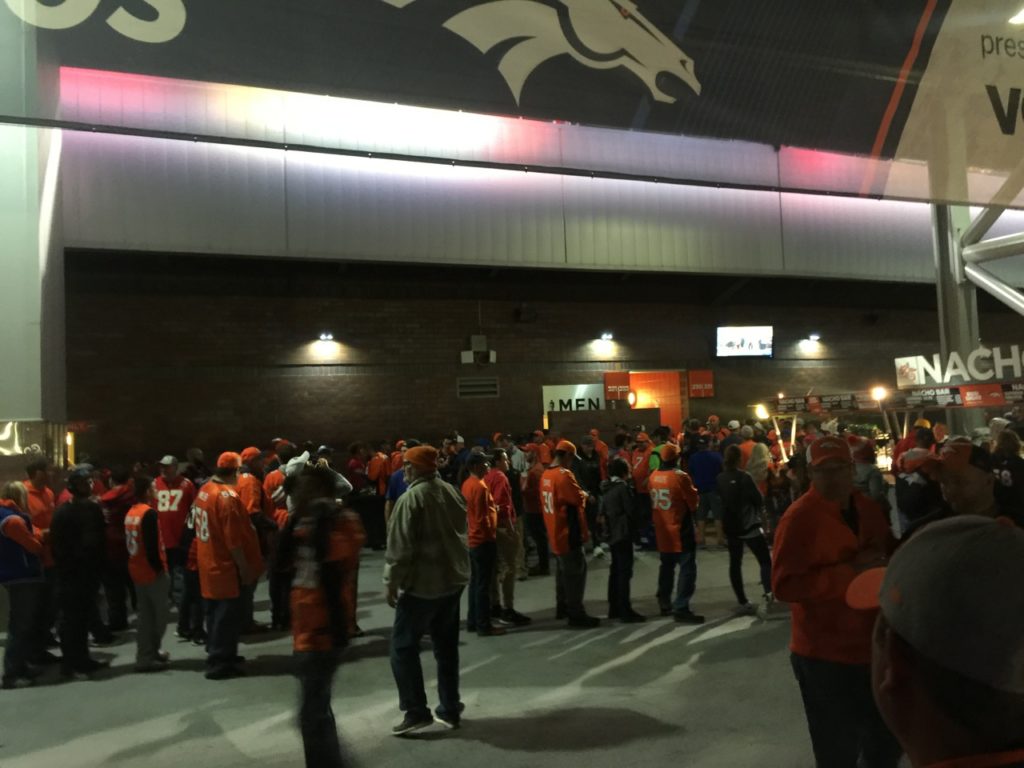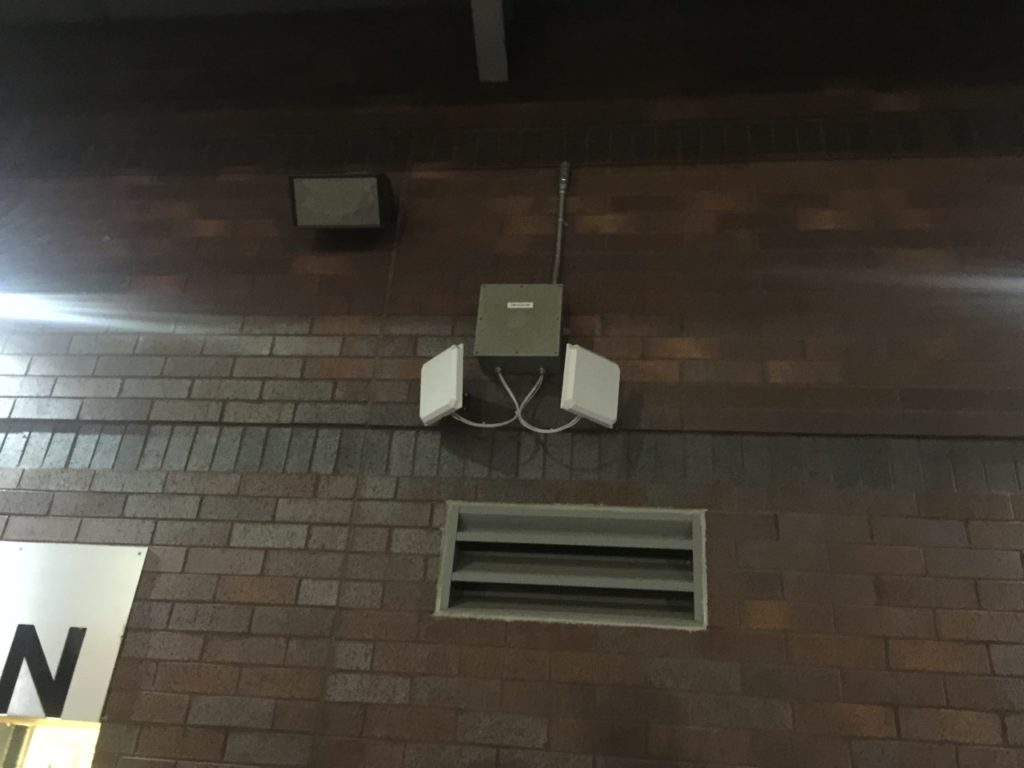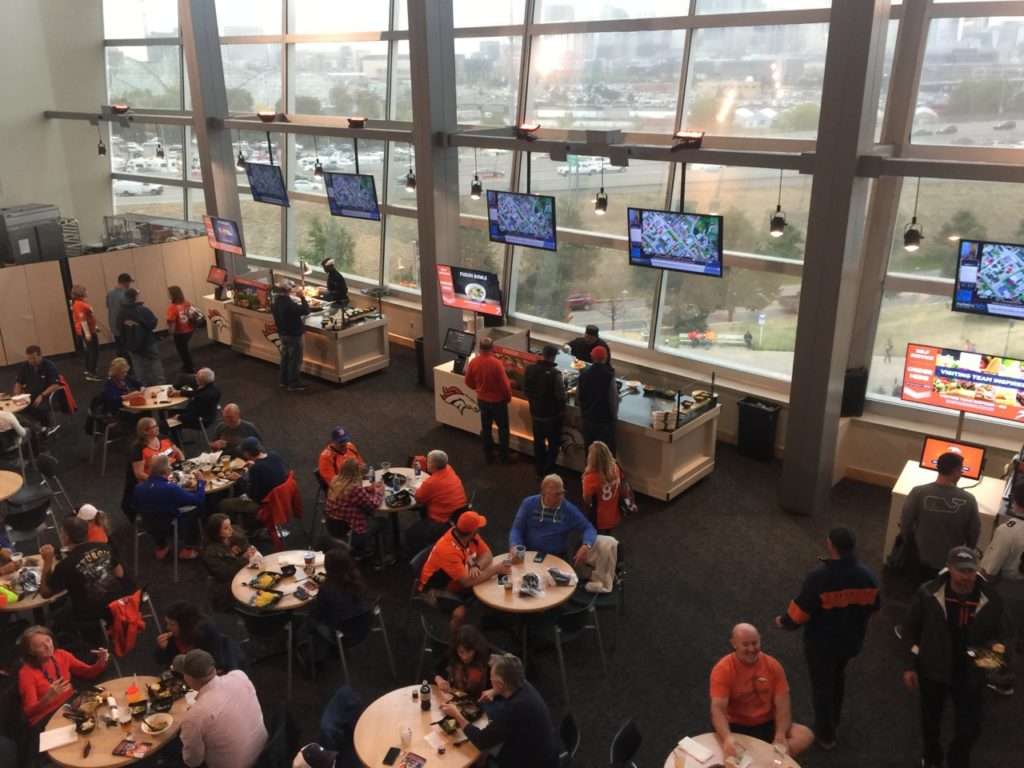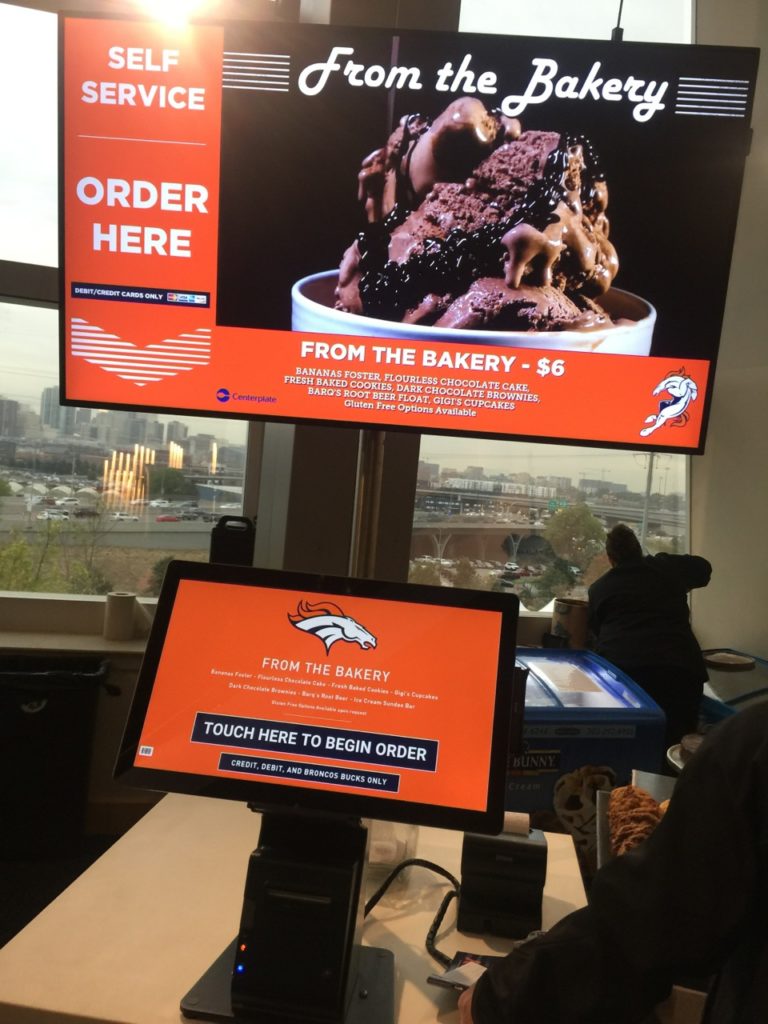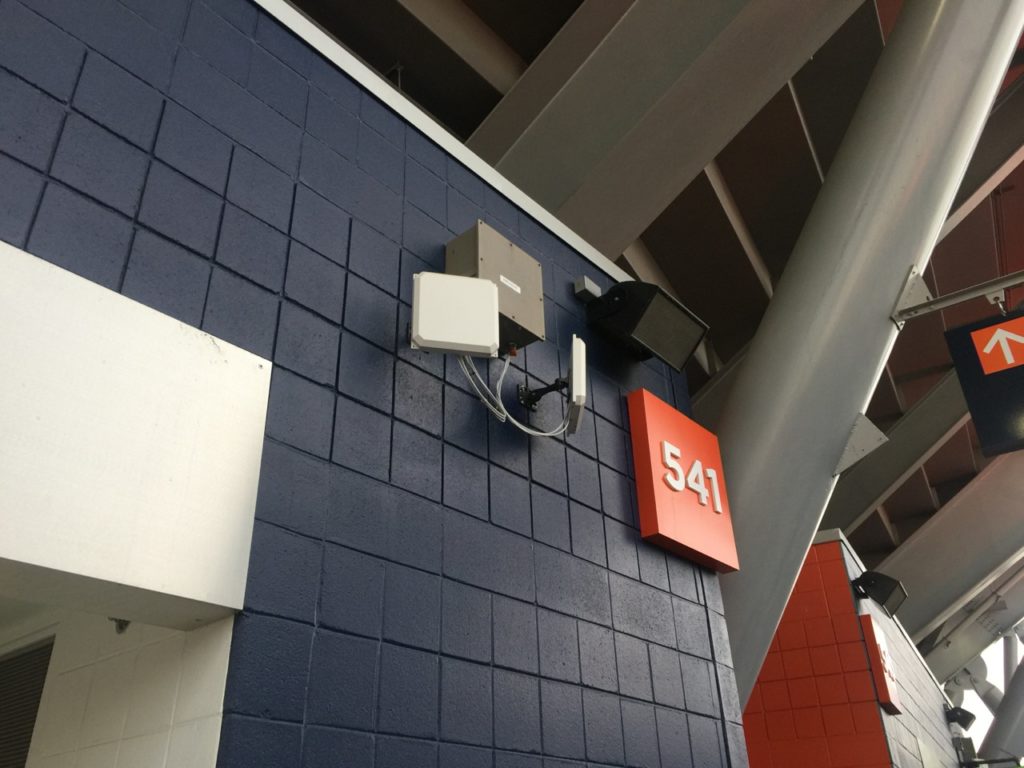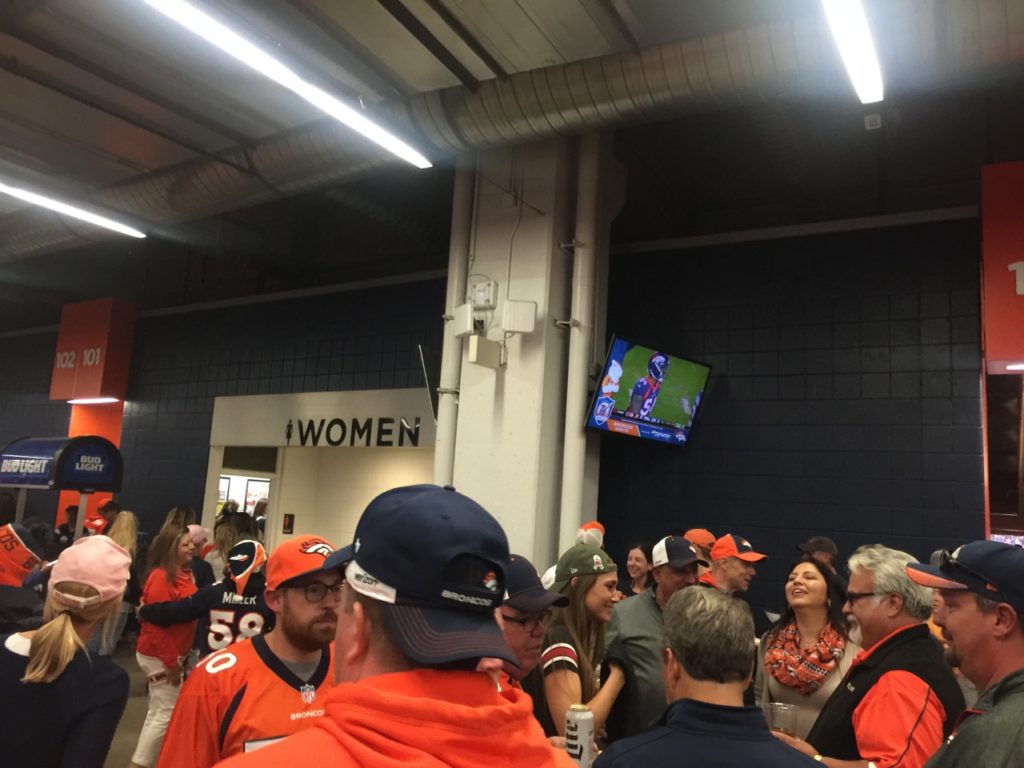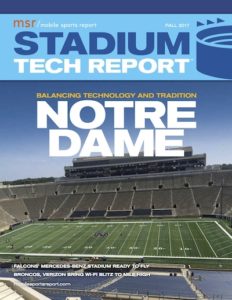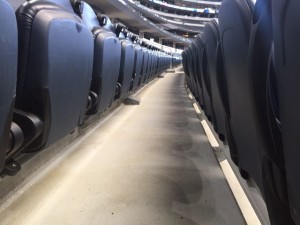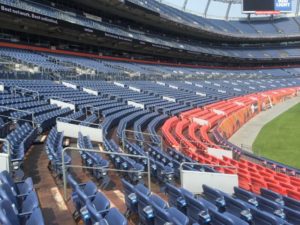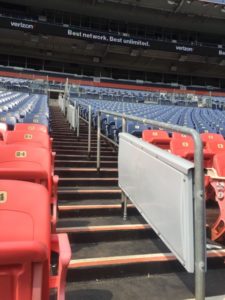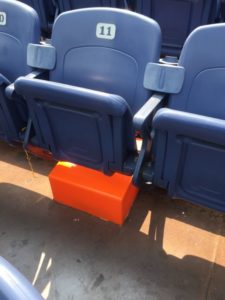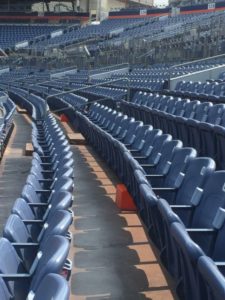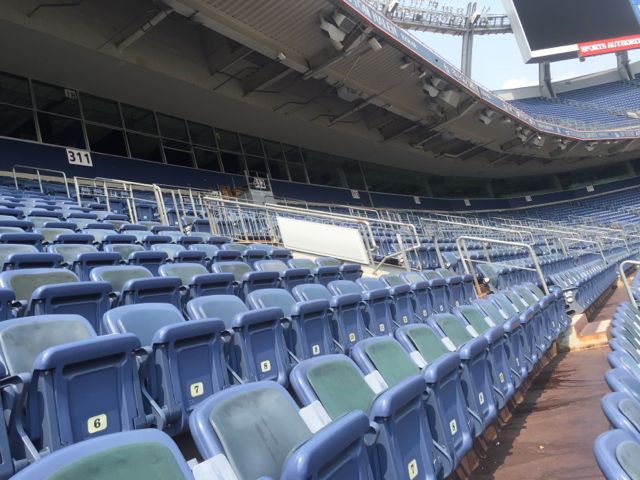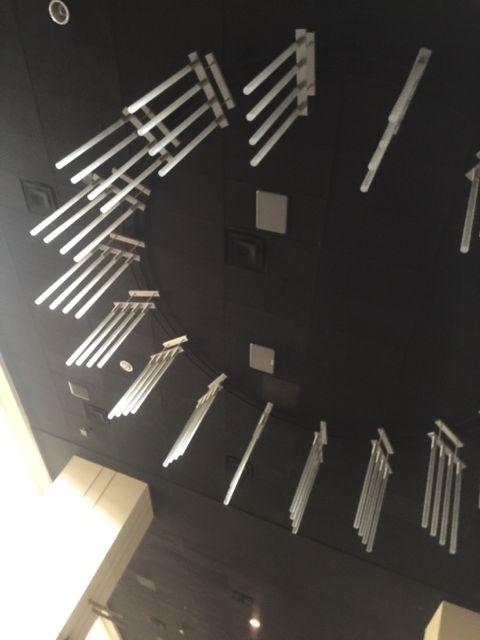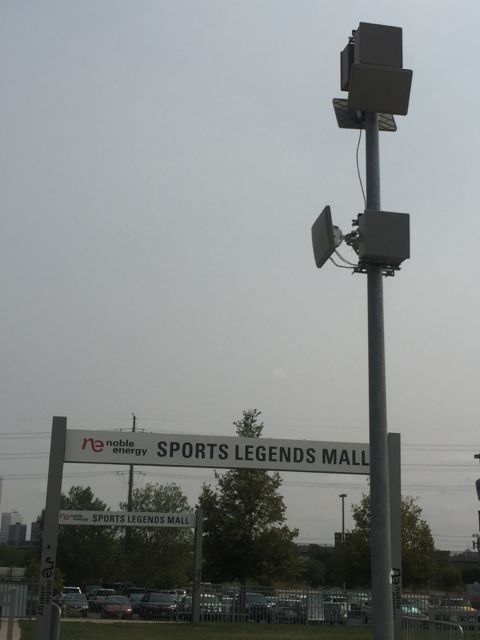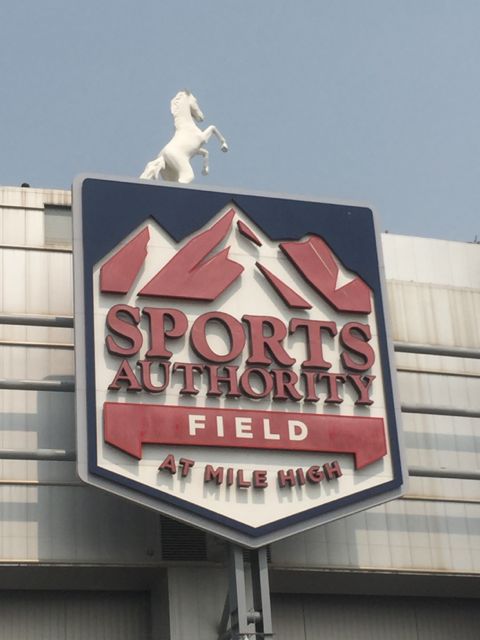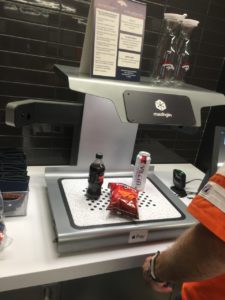
A fan uses the visual-recognition system to purchase concessions at Empower Field at Mile High earlier this fall. Credit all photos: Paul Kapustka, MSR (click on any picture for a larger image)
While there are no hard numbers yet on the experiments, a Mobile Sports Report visit to Mile High earlier this year saw heavy use of the new technologies, which mainly include touch-screen ordering and payment systems as well as an innovative visual-recognition device to tabulate items in grab-and-go scenarios. A few quick interviews with fans at the stands got mixed reactions on whether or not the new technology actually speeded up the processes, but some stopwatch clocking showed speedy checkouts, especially those using the visual-recognition technology, where items are placed on a scanner bed which then quickly recognizes and tabulates the total on an attached payment screen.
For those of us who are now (maybe unwillingly) becoming accustomed to checking out our own items at supermarket self-checkout terminals, the Broncos’ stands that utilize the visual-recognition devices (from a company called Mashgin) are far easier to use than trying to scan a barcode for each item. At Mile High, the scanners are the perfect endpoint for a series of stands called “Drink MKT,” which are basically spaces with coolers filled with multiple beverage choices, from bottled water through multiple types of beer and other alcoholic drinks, including $100 bottles of John Elway Cabernet. At those stands fans simply walk in, choose what they want from a cooler and queue up for the scanners. When items are placed on the scanner beds the system’s cameras detect the items and generate a total bill, which is paid for by credit card on an attached terminal. Human-staff intervention is only needed to check IDs and to help fans open up the beverages before they leave the stand.
While one fully jammed Drink MKT stand on the main concourse level didn’t seem to be moving any more quickly than traditional concessions windows (“It’s not faster, but there are way more choices,” said one fan), on the top-level concourse a stream of fans grabbed beverages just after the game’s start, with each transaction taking only a minute or less from setting the items on the scanner to leaving the stand. “It’s fun!” said two fans leaving the Drink MKT stand on the top-level concourse. “And it’s way faster.”The Mashgin scanners were also in use at another stand clearly designed to speed up the food-getting process, a walk-through type arrangement where fans could grab from a limited selection of food and beverage items (pizza, popcorn, hot dogs, plus beer and soft drinks) before paying at a Mashgin scanner. Again, the only human interaction from a staffing point was to check IDs, help customers with the payment system, and ensure all beverages were opened before the fans left the stands. Truly, the interaction that took the longest was the can opening process, which is tricky to do yourself if you are carrying several items (there are no bags to carry the concessions from the stands). The Mashgin systems are showing up in other sports venues, including this report of it being combined with the Clear system to speed up payments even more.
Display ordering and payment systems also emerge
Another self-service technology (which many have probably seen in fast-food restaurants or other venues like airports) in use at Mile High is the use of digital display screens to let fans order from on-screen menus and pay with a credit card at the same terminal. At Mile High, like other systems used at some stadiums and at many fast-food restaurants, the digital terminals spit out a paper slip with an order number that fans use to pick up their items at a separate window.
On the main lower-level concourse at Mile High, such a system was in heavy use at a fried-chicken food stand, with many fans clearly comfortable with the ordering, payment and pickup process. MSR saw some similar systems in use at Chase Center, the Golden State Warriors’ new home, on a recent visit there this fall.The Broncos also have another type of digital-screen ordering system in one of their premium club areas, where fans can order items from several different “stands,” each with a different entree or dessert item. Again, a paper ticket is generated that the fans then take to the food-preparation stands to pick up their orders.
Club-level fans also have the opportunity at Mile High to order food and drink to be delivered to their seats, via the team app. The food ordering and delivery function is powered by Tap.in2, a company we’ve profiled before.
We’ll circle back with the Broncos after this season to try to get some stats on whether or not the new stands and technologies won over fans and improved the service, but it’s heartening to see stadiums and teams push the envelope a bit to help fans get back to their seats more quickly. More photos below!
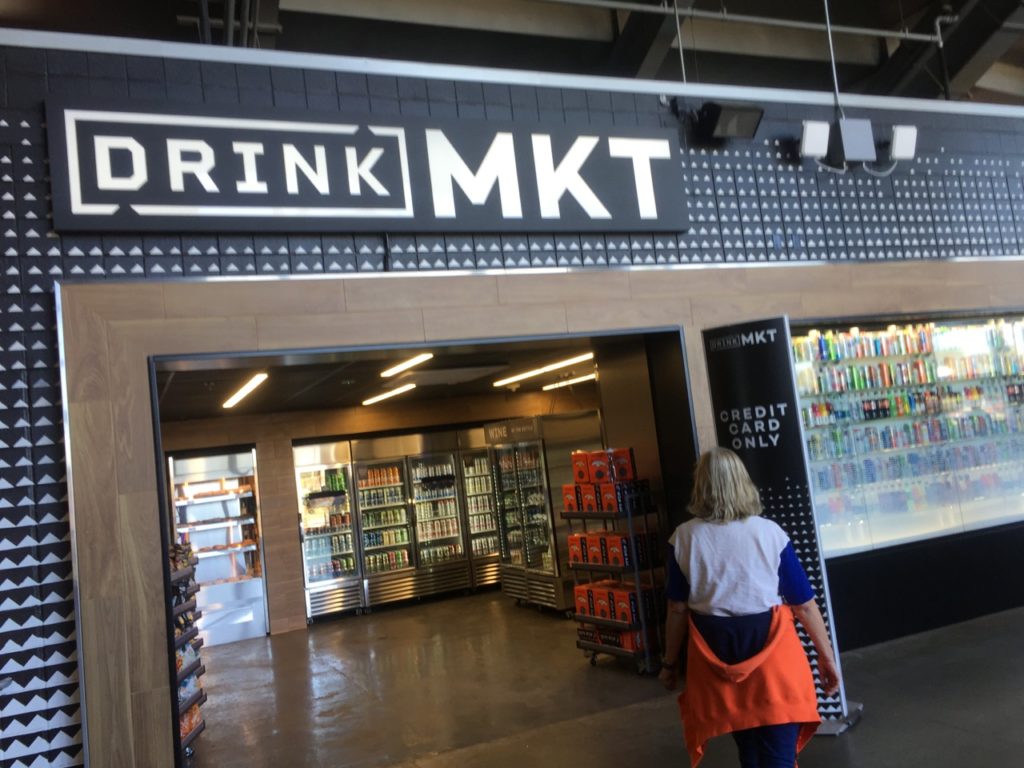
A look at the entry to one of the Drink MKT stands
The grab-and-go format of the Drink MKT stands offers fans a lot of choice
Technology can help, but the just-before-kickoff crush will always produce a line
The order-and-pay kiosks at a fried chicken stand are familiar to anyone who’s done fast food recently
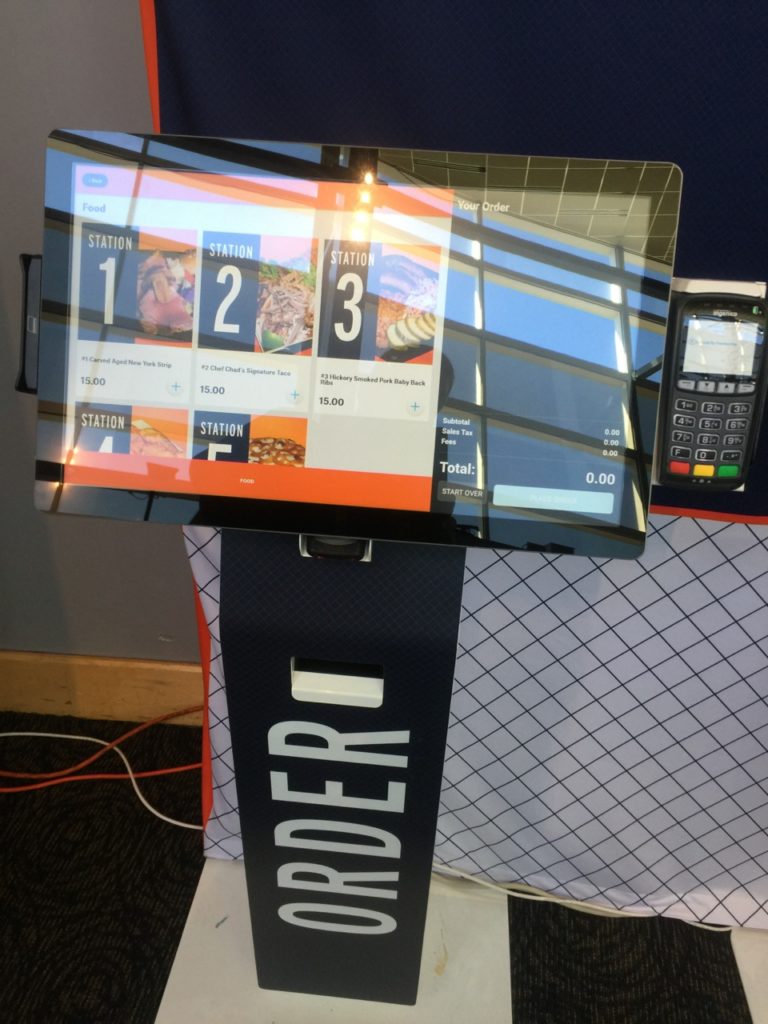
A club-level kiosk system allows fans to pick from several different food stands
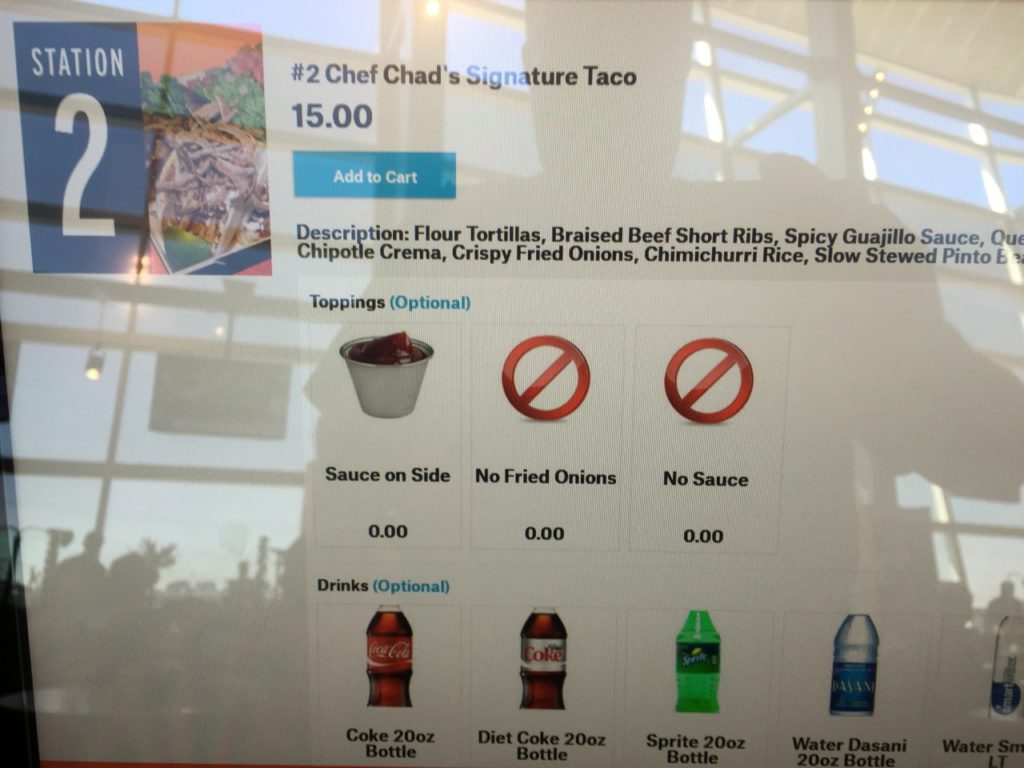
Most kiosk systems seemed to have a good amount of customization available
The club-level stands offer flexible choices
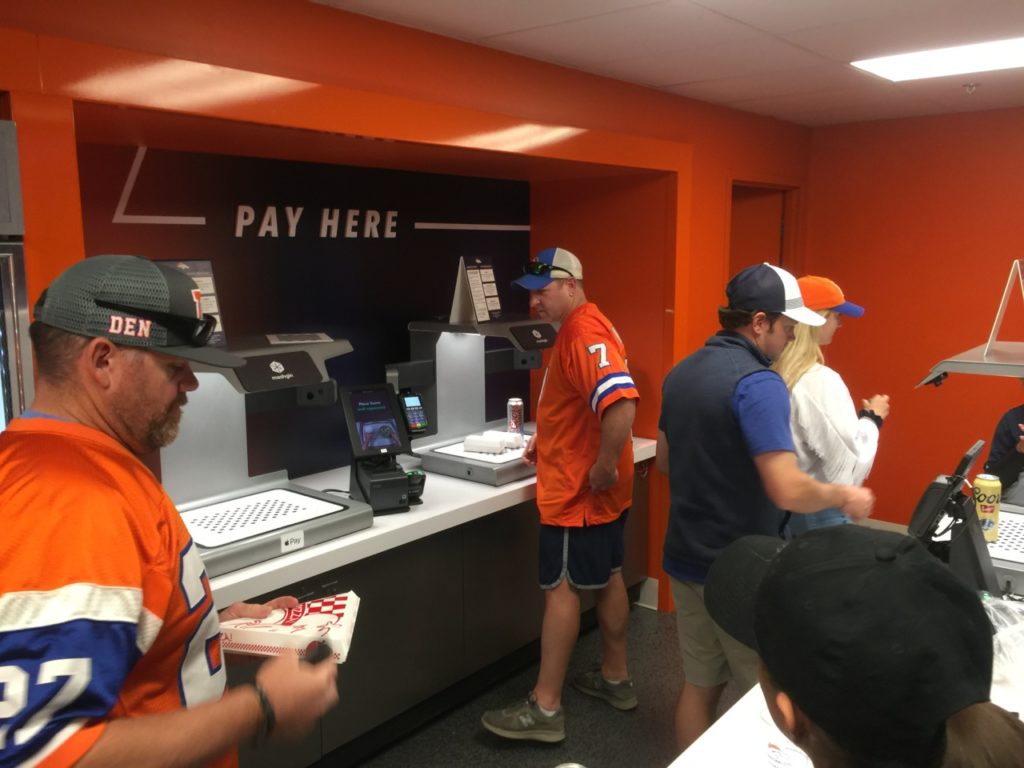
The Mashgin checkout systems were also used at a grab-and-go food/beverage stand
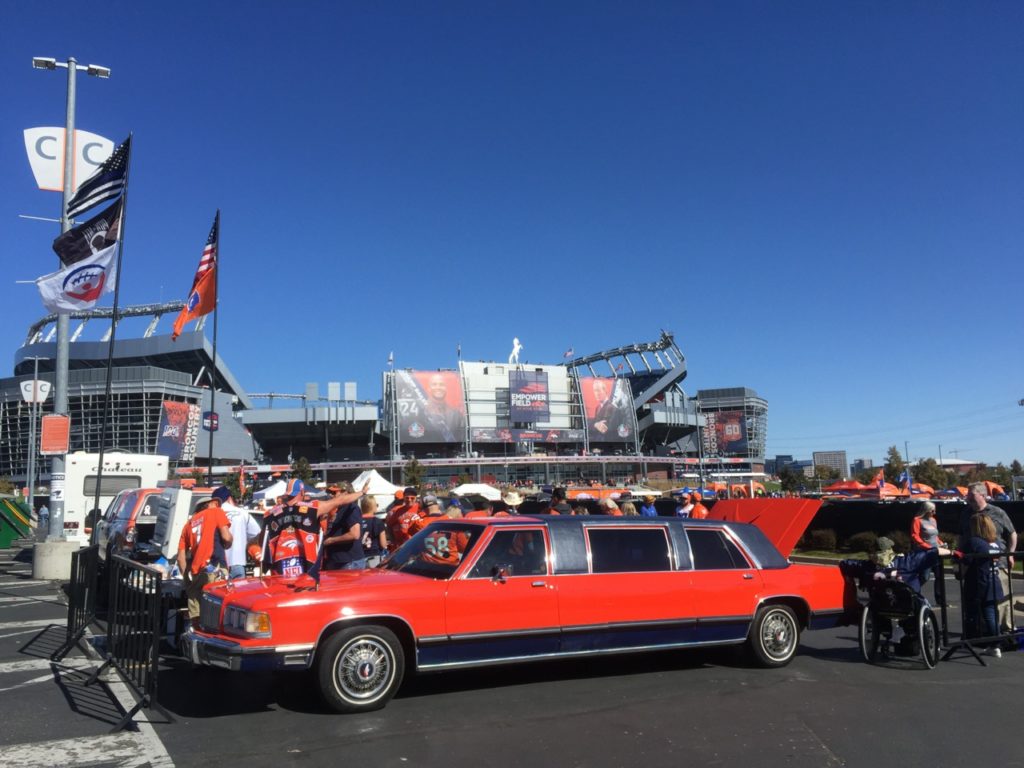
Tailgating at Mile High can still be classy and old-school
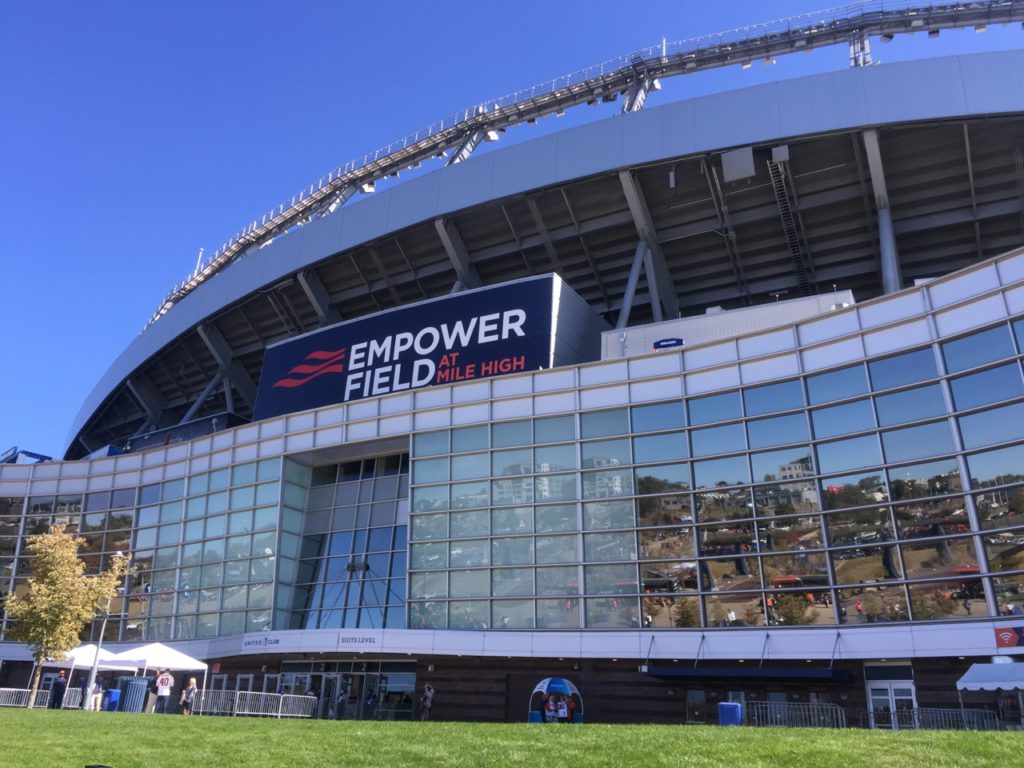
In case you hadn’t heard, the place has a new name
Hard to beat a sunny Sunday at Mile High
